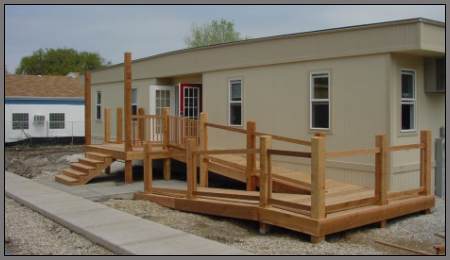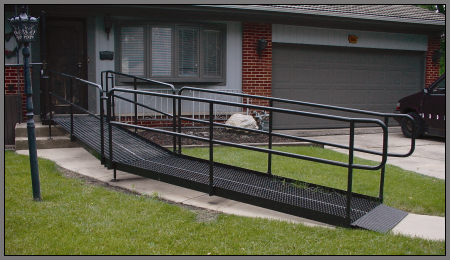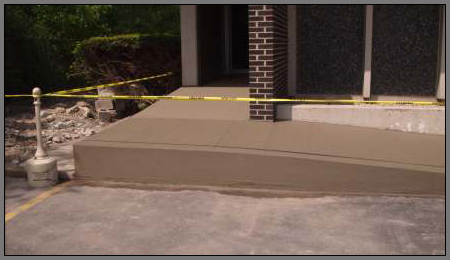
Accessibility News
Materials
Aluminum
A good material for any kind of ramp. Aluminum is strong and lightweight. It requires virtually no maintenance. It is great for permanent or semi-permanent installations as it can be easily disassembled, moved and reinstalled in a new location. Aluminum ramps also require no building permit, since they are not permanently attached to the building. Aluminum ramps require a special non-slip walking surface especially in wet or snowy climates. Aluminum ramps can be easily adjusted if the ground underneath heaves or settles.

Wood
Wood ramps, when properly built, have the potential to be visually pleasing, in that they can be made to match the architecture of the building they are attached to. Wood ramps have many drawbacks. They require constant maintenance to prevent rotting, warping and hand rail splinters. They can be very slippery when wet, so they need to have a non-slip surface added and maintained. Wood ramps require a building permit and must be built from scratch (as opposed to aluminum ramps which have pre-built modular components). Wood ramps can not be removed and reassembled at a new location. Wood ramps are difficult to adjust in the event of the ground under the supports settling or heaving.

Steel
Steel ramps are generally less expensive than aluminum, and can have higher weight capacity than wood or aluminum. Steel ramps are very heavy. They also can rust if not properly rust-proofed and maintained.

Concrete
Concrete is the most expensive ramp option available. It is also the strongest and the most permanent. Concrete ramps can easily have excellent non-slip surfaces built in during construction. Concrete ramps require specialized installation and building permits. Concrete ramps are extremely difficult to adjust or reconfigure after they are installed.
